- Introduction
- Micronutrients requirements during pregnancy
- Vitamin requirements during pregnancy
- Other vitamins
- Mineral requirements during pregnancy
- Essential fatty acid requirements during pregnancy
Introduction

To avoid poor nutrition, individuals must consume enough macronutrients to give their body energy (e.g. proteins and carbohydrates) as well as a range micronutrients, to maintain specific body functions. For example, an individual requires calcium for deposition in bone tissues to help bones grow and maintain their density. Vitamin A is required to maintain the health of the eyes.
Micronutrients requirements during pregnancy

However it is important for women to seek nutritional advice from a health professional about their micronutrient requirements before and during pregnancy, as well as the types of food which are goods sources of these micronutrients. Health practitioners may also be a good source of information about micronutrient supplements for women who are unable to meet their demands for particular micronutrients from their diet.
It is important that pregnant women are aware that many micronutrients are interrelated in function, so a deficiency in one micronutrient might affect the utilisation of other micronutrients. For example, vitamin K influences the absorption of calcium; the absorption of iron from plant sources is increased when more vitamin C is available; and vitamin B12 is involved in converting folate to the form in which it can be absorbed by the body, known as methyl-tetrahydrofolate.
While pregnant women should obtain the majority of their micronutrients from dietary sources (the food they eat), in some cases it is necessary for a pregnant woman to take vitamin or mineral supplements, in addition to eating a healthy balanced diet.
Vitamin requirements during pregnancy
Vitamin A
Function
Vitamin A plays an important role in developing and maintaining eye health. It also regulates cell growth and protects fertility and the immune system.
During pregnancy, vitamin A is particularly important for ensuring optimal eye development in the embryo (a fertilised egg in the very early stages of pregnancy, before it takes on human characteristics). Vitamin A regulates the way in which cells differentiate to form different parts of the eye including the:
- Conjunctiva – the mucous membrane which covers the front of the eyes and the eyelids;
- Cornea – the front section of the eye;
- Photoreceptor rod cells (rod shaped cells in the eye’s retina which sense dim light and help individuals to see at night); and
- Cones cells (cells in the eyes which sense bright light and are important for seeing in daylight).
It also plays an important role in regulating the development of the spinal cord, vertebrae, limbs, heart and ears of the embryo.
Health effects

Keratomalcia (night blindness) is a common early symptom of vitamin A deficiency and is most common in pregnant women who are vitamin A deficient.
Vitamin A deficiency during pregnancy is also associated with an increased risk of the following conditions/complications:
- Iron-deficiency anaemia – evidence suggests that combined vitamin A-iron supplementation is most effective in reducing the incidence of iron-deficiency anaemia during pregnancy;
- Maternal mortality – although further research is needed, one study also showed that women who took vitamin A supplements while they were pregnant were 40% less likely to die during pregnancy or childbirth than those who did not take the supplements;
- Premature birth;
- Intrauterine growth retardation;
- Low birth weight;
- Bleeding during pregnancy due to premature detachment of the placenta from the wall of the womb (abruptio placentae).
Requirement
In Australia it is recommended that pregnant women ≥ 19 years of age consume 800μg of vitamin A retinol equivalents daily compared to 700μg for non-pregnant women. Pregnant women aged 14-18 years should consume 700μg of vitamin A retinol equivalents per day, the same quantity which is required by non pregnant women of their age.
It is important to note that consumption of excessive quantities of vitamin A may lead to acute or chronic toxicity. During pregnancy this increases the risk of miscarriage, stillbirth and birth defects in the infant. Individuals who use vitamin A containing products (including skin creams for the treatment of skin disorders such as acne) should not use vitamin A supplements at the same time.
Dietary sources

- Plant oils (e.g. canola oil);
- Darkly coloured vegetables such as spinach; and
- Yellow vegetables such as squash, pumpkin and carrots.
Preformed retinoids are found in animals sources including:
- Dairy products;
- Fish;
- Liver;
- Kidney; and
- Eggs.
Supplements
Routine vitamin A supplements are not recommended for pregnant women in Australia.
Folate
Function
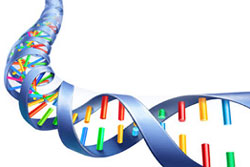
Health effects
Folate deficiency during pregnancy increases the risk of neural tube defects in the infant. An estimated 70% of neural tube defects could be prevented by ensuring that women consume adequate amounts of folate before and in the first trimester of pregnancy.
Folate deficiency may also cause haemolytic anaemia (anaemia or a lack of red blood cells caused by the premature death of these red blood cells) in pregnant women.
Requirement
A woman’s folate requirement increases by 50% during pregnancy and is particularly high in the first trimester of pregnancy. The recommended daily intake of folate for all pregnant women is 600μg, compared to 400μg for non-pregnant women.
It is important to note that this requirement does not include the additional folate necessary to prevent neural tube defects, as folate intake prior to becoming pregnant largely determines the risk of neural tube defect. This is because the neural tube is formed in the very early stages of pregnancy, before the woman realises she is pregnant. It is therefore also important for women of childbearing age who are planning a pregnancy or might become pregnant to ensure they consume the recommended quantities of folate for at least one month pre-pregnancy.
Dietary sources

- Breakfast cereals fortified with folic acid;
- Other cereals or cereal based foods (e.g. bread);
- Yeast extract (e.g. vegemite);
- Beans and legumes;
- Orange juice fortified with folate.
Supplements
Because a woman’s folate requirement increases substantially during pregnancy, many pregnant women fail to consume adequate dietary folate. Thus folate supplements are routinely provided to pregnant women in Australia. The standard dose is 0.5mg daily, however for women with an increased risk of delivering an infant with neural tube defects, a 5.0mg daily dose is recommended. These women include individuals:
- Taking anticonvulsant medication;
- With pre-pregnancy diabetes mellitus;
- With haemolytic anaemia;
- With a multiple pregnancy;
- With a neural tube defect or a partner with a neural tube defect;
- With a family history of neural tube defects;
- With child who has a neural tube defect.
As the neural tube develops before most women know they are pregnant, women planning a pregnancy should take folate supplements for at least a month before they become pregnant. Folate supplements can also be given later in pregnancy, however there is evidence of an association between folate supplementation during late pregnancy (weeks 30-34) and an increased risk of childhood asthma.
It should also be noted that too much folate can be dangerous and folate intake should not generally exceed 1000μg per day for women aged >19 and 800μg per day for women aged 14-18.
Vitamin B12
Function
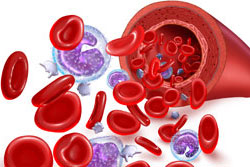
Health effects
Vitamin B12 deficiency has a range of adverse health effects for pregnant women including:
- Anaemia and symptoms of anaemia, for example:
- Skin pallor;
- Low energy;
- Fatigue;
- Reduced exercise tolerance;
- Shortness of breath;
- Palpitations.
- Neurological complications including:
- Sensory disturbance (altered sensations) in the arms and legs;
- Motor disturbance (disturbed movement);
- Memory loss;
- Mood change;
- Visual disturbances;
- Impaired bowel and bladder control.
Requirement
A woman’s vitamin B12 requirement increases during pregnancy in relation to the requirement of the growing foetus. The recommended daily intake of vitamin B12 for all pregnant women is 2.6μg, compared to 2.4μg for non-pregnant women. A woman’s vitamin B12 requirement rises to 2.8μg per day whilst she is breastfeeding. There is no evidence that consuming too much vitamin B12 is unsafe.
Dietary sources
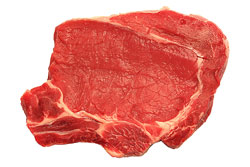
The bioavailability (extent to which it is available and absorbed by the body) of vitamin B12 varies, depending on the source. For example, 11% of the vitamin B12 contained in liver is readily absorbable, compared to some 60% of that in chicken or mutton.
Good dietary sources of vitamin B12 include:
- Red meat;
- Dairy products;
- Fish;
- Chicken;
- Eggs;
Supplements
Pregnant women will typically obtain sufficient vitamin B12 from dietary sources and vitamin B12 supplementation is not routinely provided to pregnant women in Australia. However, for vegan or vegetarian women who do not consume most dietary sources of vitamin B12, supplements are essential.
Vitamin C
Function

Vitamin C is an antioxidant which may protect us from some diseases and ageing. It is also important for the production of collagen (a component of skin) bones, cartilage, muscles and blood vessels. Vitamin C is an essential micronutrient for ensuring good dental health for the pregnant woman and her foetus, as it plays an important role in the development of healthy gums. Adequate vitamin C intake also increases an individual’s absorption of non-haem iron.
Vitamin C is found in all body tissues, but is found in high concentrations in the adrenal and pituitary glands (hormone producing glands), body fluids, leukocytes (small white blood cells), eye and brain tissues. However, it cannot be stored in body tissues for long periods of time, and must therefore be consumed every day.
The concentration of vitamin C in a woman’s blood declines progressively and by up to 50% during pregnancy. This is due to the vitamin C which is used by the foetus and hemodilution (a process through which the blood is diluted by incorporating more fluid).
Health effects
Vitamin C deficiency causes scurvy which has severe and sometimes fatal consequences if not treated. Further research is needed to determine whether or not there are associations between vitamin C deficiency and maternal complications including pre-eclampsia (hypertension during pregnancy) and abruptio placentae (premature detachment of the placenta from the womb).
Requirement
During pregnancy, women require an additional 15mg of vitamin C per day. Women aged 14-18 should consume 55mg of vitamin C (compared to 40mg when they are not pregnant). Those aged ≥18 years of age should consume 60mg per day (compared to 45mg per day pre-pregnancy).
Dietary sources

- Citrus fruits such as oranges;
- Soft fruit including black currants and kiwi fruit;
- Leafy green vegetables including sprouts and broccoli.
It is important to note that cutting, heating or bruising fruit and vegetables may reduce their vitamin C concentrations.
The proportion of dietary vitamin C which is absorbed by the body is usually 70-90%. However when an individual consumes more vitamin C than their daily requirement, the amount which is absorbed reduces by up to 50%. The rate of vitamin C absorption is also reduced in smokers.
Supplements
Vitamin C supplements are not routinely recommended for pregnant women in Australia. Supplementation during pregnancy may increase the risk of preterm birth.
Vitamin D
Function
Vitamin D has an important function in assisting the body to absorb calcium and phosphorus. It is also an important nutrient for optimal immune function, maintaining healthy skin and muscle strength.
Health effects
Vitamin D deficiency in a pregnant woman is an important risk factor for the development of osteoporosis later in life. In the foetus it can lead to childhood rickets (a disease which retards skeletal development and causes weak bones).
Requirement

Dietary sources
Vitamin D is mainly obtained through exposure to sunlight and most individuals can obtain sufficient vitamin D through sun exposure rather than dietary sources. There are also a number of dietary sources of vitamin D, including:
- Vitamin D fortified margarine; and
- Fatty fish such as salmon and herring.
Supplements
There is insufficient evidence to determine whether or not vitamin D supplementation improves maternal or foetal health. Some women with high risk of deficiency may be tested for vitamin D levels with a view to providing vitamin D supplements, including women who:
- Wear a veil;
- Always wear sunscreen;
- Are obese;
- Are of South Asian, Carribean, African or Middle Eastern descent.
In England, where exposure to sunlight is much lower than Australia, vitamin D supplementation is recommended routinely during pregnancy.
Vitamin K
Function
The most important role of vitamin K is in regulating blood clotting. It regulates both coagulation (thickening of the blood) and anti-coagulation (thinning of the blood).
Health effects
Vitamin K deficiency can lead to bleeding disorders, in particular increased clotting time, which may be particularly dangerous during delivery. Low vitamin K intake is also associated with an increased risk of hip fracture.
Requirement
There is no evidence that a woman’s vitamin K requirement increases above the usual 60μg daily during pregnancy.
Dietary sources

- Spinach;
- Brussel sprouts;
- Green salad vegetables;
- Broccoli;
- Plant oils (e.g. canola oil).
Supplements
Vitamin K supplements are not routinely recommended during pregnancy and should only be given in the late stage of pregnancy, to women:
- With choleostasis (excessive bile production) of pregnancy due to reduced vitamin K absorption;
- Taking anticonvulsant medication.
Other vitamins
There is currently insufficient evidence to recommend routine supplementation with other minerals, including vitamin E during pregnancy. There appears to be no additional benefits associated with multi-micronutrient supplementation compared to supplementation with folate and iron only.
Mineral requirements during pregnancy
Iron
Function
Iron is a component of a number of essential proteins, including haemoglobin which is essential for transporting oxygen in the blood.
Health effects
Inadequate iron intake can lead to a range of iron deficiency disorders, from low iron stores at the mild end of the spectrum to iron deficiency anaemia at the severe end. Symptoms of these disorders include fatigue, jaundice and reduced work capacity.
Requirement

Dietary sources
Dietary sources of iron include both plant and animal based foods. However, the iron found in animals foods (also known as haem-iron) is absorbed much more readily by the body than the iron found in plant food (non-haem iron). Iron absorption is also influenced by the availability of other micronutrients (e.g. vitamin C).
Good sources of iron include:
- Red meat;
- Fish;
- Chicken
- Grains;
- Legumes;
- Leafy green vegetables like spinach.
Supplements
Iron supplements are not routinely given to pregnant women in Australia. However, all pregnant women should have their haemoglobin (molecule which transports oxygen through the blood and is an indicator of iron deficiency) level checked at the commencement of antenatal care and again at 28 weeks gestation, to check whether or not they require iron supplements. Women with anaemia should also be tested to ascertain whether or not iron supplementation is necessary.
Women at particular risk of iron deficiency, who are more likely to need iron supplements than others, include:
- Vegetarian and vegan women; and
- Women with a multiple pregnancy.
Calcium
Function
Calcium’s key function is to ensure the proper growth and structure of teeth and bones.
Health effects
Low calcium intake throughout life, and particularly in periods of rapid growth such as pregnancy, increases the risk of osteoporosis later in life, particularly after menopause.
Requirement

Dietary sources
Calcium is primarily found in dairy foods, although bony fish, legumes and fortified foods are also sources of calcium. Calcium is more readily absorbed from dairy than other sources. For example compared to milk, the rate of calcium absorption from dried beans is about 50% and from spinach is about 10%.
Good sources of dietary calcium include:
- Milk;
- Cheese (although pregnant women should only eat hard yellow cheeses);
- Yoghurt;
- Calcium fortified soy products; and
- Legumes.
Supplements
Routine calcium supplementation during pregnancy is not recommended in Australia, where most women will obtain sufficient calcium from dietary sources. Women who may be at risk of calcium deficiency and require supplementation include:
- Women with vitamin D deficiency;
- Women who avoid dairy products and do not substitute dairy with calcium enriched soy products.
In women with a high risk of calcium deficiency a doctor may recommend calcium supplements.
Iodine
Function
Iodine is an essential trace element which assists in growth, metabolism and tissue development. Iodine also plays a role in the body’s energy production and oxygen consumption.
Health effects
Iodine deficiency can result in a range of adverse health effects collectively referred to as iodine deficiency disorder. In the foetus/infant of an iodine deficient woman, these include:
- Poor foetal outcomes including:
- Miscarriage;
- Stillbirth;
- Congenital abnormalities;
- Poor infant outcomes including:
- Higher rates of infant mortality;
- Neurological cretinism (a congenital condition of impaired thyroid hormone secretion which impairs cognitive development);
- Mental deficiency with deaf mutism;
- Spastic diplegia (spastic paralysis of the limbs) and squint;
- Myxoedymateous cretinism (a type of cretinism in which physical development is impaired) and dwarfism (very short stature;
- Psychomotor effect (movement effects).
In adults these include:
- Goitre (enlargement of the thyroid gland);
- Hypothyroidism (lack of hormones produced by the thyroid gland);
- Impaired mental and physical development.
Requirement
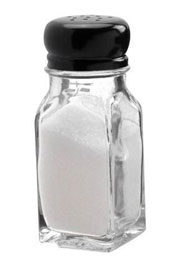
Dietary sources
The availability of iodine in plant foods varies considerably depending on the availability of iodine in the soil in which the plants are grown. The best dietary sources of iodine are marine products (e.g. fish, oysters). In past decades Australians have received a considerable proportion of their iodine through iodine fortified salt, however due to declining salt use in the Australian population, iodine deficiency is now an increasing issue.
Supplements
Iodine supplements are provided routinely in areas where there is a regional deficiency, for example due to low iodine levels in the soil in that region. Doctors may also recommend iodine supplements to other women if they suspect a deficiency, because of the critical importance of avoiding iodine deficiency during pregnancy.
Zinc
Function
Zinc is a micronutrient which plays a role in maintaining the structural integrity (normal form) of proteins and regulates gene expression (how genes and genetic traits are replicated in the DNA). It is mainly stored in bones and muscle tissues.
Health effects
Zinc deficiency during pregnancy is associated with an increased risk of pregnancy complications, including:
- Pre-eclampsia (high blood pressure and urinary protein concentrations during pregnancy);
- Premature rupture of membranes (when a woman’s amniotic sac/pregnancy water breaks before she experiences contractions); and
- Preterm delivery.
It is also associated with foetal abnormalities including growth retardation and other congenital abnormalities.
Requirement

Dietary sources
Zinc is found in a wide variety of foods. The majority of zinc in the diet comes from animal products, especially meat, fish and poultry but also vegetables and dairy products. The bioavailability of zinc varies markedly depending on the availability of protein in the diet, and zinc from protein rich animal foods is absorbed as much as 50% more readily than zinc from vegetables sources. Dietary intake of large quantities (e.g. quantities similar to those found in supplements) of iron and possibly other minerals and vitamins can also affect zinc absorption.
Supplements
Zinc supplements are not routinely provided to pregnant women in Australia. However, women who are vegetarian or vegan may be at risk of zinc deficiency during pregnancy because the zinc in their diet is absorbed less efficiently than in women who consume meat and dairy products.
Magnesium
Function
Magnesium is a micronutrient which works with more than 300 enzymes involved in energy generation and glycolysis (break down of sugars and carbohydrates). It also plays a role in regulating the function of other minerals including calcium and potassium. About half the magnesium in the human body is found in bones and a further third is stored in muscle and soft tissues.
Health effects
Maternal magnesium deficiency increases the risk of pre-eclampsia and pre-term delivery. There is also some evidence of an association with low birth weight. Moderate-severe deficiency is also associated with an increased risk of hypercalcaemia (excessive levels of calcium in the blood).
Requirement
A woman’s magnesium requirement during pregnancy increases in comparison with pre-pregnancy requirements and varies with age. Women aged:
- 14-18 years require 400mg of magnesium per day;
- 19-30 years require 350 mg per day;
- ≥31 years require 360mg per day.
Dietary sources

- Green vegetables;
- Legumes;
- Peas, beans and nuts;
- Some shellfish;
- Some spices.
It is also present in lower amounts in unrefined grains but not in refined cereal such as flour.
Absorption varies widely depending on an individual’s magnesium intake, with as little as 25% of magnesium consumed being absorbed by individuals with high intake compared to 75% by individuals with low intake. Absorption also varies depending on the availability of other constituents of the diet, with high zinc or fibre or a combination of high calcium and sodium intake decreasing absorption. Low protein intake also decreases absorption.
Supplements
Routine magnesium supplementation is not recommended for Australian women.
Selenium
Function
Selenium is a trace mineral which is an antioxidant and plays an important role in regulating the function of the thyroid (a gland which produces hormones which regulate the metabolism).
Health effects
During pregnancy selenium deficiency increases the risk of low birth weight and pre-eclampsia.Selenium may be toxic at high levels and result in fever, gastro-intestinal symptoms and even death. However it is not known how much selenium is needed to cause toxicity.
Requirement
It is recommended that pregnant women consume 65μg of selenium per day (compared to 60μg per day for non-pregnant women).
Dietary sources
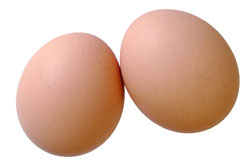
- Seafood;
- Poultry; and
- Eggs.
Plant foods (including grains, nuts, alfalfa, garlic and radish) may also contribute dietary selenium depending on the selenium soil concentration in the area in which they were grown. Between 55-70% of selenium in the diet is absorbed by the body.
Supplements
Routine selenium supplementation is not recommended for pregnant women in Australia.
Other minerals
There is currently insufficient evidence to recommend routine supplementation with other minerals, including fluoride during pregnancy. There appears to be no additional benefits associated with multi-micronutrient supplementation compared to supplementation with folate and iron only.
Essential fatty acid requirements during pregnancy
Omega-3
Function
Omega-3 is an essential fatty acid. It cannot be produced by the body and therefore people must consume their omega-3 requirement. Omega-3 fatty acids are important components of cell membranes (including the membranes of cells which form the eye) and the central nervous system.
Health effects
Further research is needed to determine the affect of omega-3 intake on pregnancy and foetal outcomes. There is some evidence that women who take omega-3 supplements maintain their pregnancies for a slightly longer time than women who do not. Evidence also suggests that women who eat more fish (the best source of omega-3) give birth to larger babies and have a lower risk of pregnancy complications.
Requirement
During pregnancy women require 1.4g of omega-3 fatty acids compared to 1.1 g pre-pregnancy.
Dietary sources

Supplements
There is currently insufficient evidence to determine the effect of omega-3 supplementation on pregnancy outcomes. In the absence of evidence, omega-3 supplements are not recommended.
More information
 |
For more information about pregnancy, including preconception advice, stages of pregnancy, investigations, complications, living with pregnancy and birth, see Pregnancy. |
 |
For more information on nutrition, including information on types and composition of food, nutrition and people, conditions related to nutrition, and diets and recipes, as well as some useful videos and tools, see Nutrition. |
References
- Nutrient reference values for Australia and New Zealand: Calcium [online]. Canberra, ACT: National Health and Medical Research Council; 2006 [cited 22 August 2009]. Available from: URL link
- Chapter 5: Energy. In: Dietary reference intakes for energy, carbohydrate, fiber, fat, fatty acids, cholesterol, protein and amino acids (macronutrients) [online]. Washington: National Academies Press; 2005 [cited 6 June 2009]. Available from: URL link
- Improving the health and nutrition of pregnant and breastfeeding mothers and children in low-income households [online]. London: National Institute for Health and Excellence; March 2008 [cited 22 August 2009]. Available from: URL link
- Dietary guidelines for Australian adults [online]. Canberra, ACT: National Health and Medical Research Council; 2003 [cited 20 January 2010]. Available from: URL link
- Nutrient reference values for Australia and New Zealand: Vitamin K [online]. Canberra, ACT: National Health and Medical Research Council; 2006 [cited 22 August 2009]. Available from: URL link
- Nutrient reference values for Australia and New Zealand: Iron [online]. Canberra, ACT: National Health and Medical Research Council; 2006 [cited 22 August 2009]. Available from: URL link
- Nutrient reference values for Australia and New Zealand: Folate [online]. Canberra, ACT: National Health and Medical Research Council; 2005 [cited 22 August 2009]. Available from: URL link
- Vitamin and mineral supplementation in pregnancy [online]. East Melbourne, VIC: Royal Australian College of Obstetricians and Gynaecologists; July 2008 [cited 22 August 2009]. Available from: URL link
- Whitrow MJ, Moore VM, Rumbold AR, Davies MJ. Effect of supplemental folic acid in pregnancy on childhood asthma: A prospective birth cohort study. Am J Epidemiol. 2009;170(12):1486-93. [Abstract | Full text]
- Nutrient reference values for Australia and New Zealand: Vitamin B12 [online]. Canberra, ACT: National Health and Medical Research Council; 2006 [cited 22 August 2009]. Available from: URL link
- Nutrient reference values for Australia and New Zealand: Vitamin D [online]. Canberra, ACT: National Health and Medical Research Council; 2006 [cited 22 August 2009]. Available from: URL link
- Mahomed K, Gulmezoglu AM. Vitamin D supplementation in pregnancy. Cochrane Database Syst Rev. 2000;(2):CD000228. [Abstract | Full text]
- Nutrient reference values for Australia and New Zealand: Calcium [online]. Canberra, ACT: National Health and Medical Research Council; 2006 [cited 22 August 2009]. Available from: URL link
- Nutrient reference values for Australia and New Zealand: Iodine [online]. Canberra, ACT: National Health and Medical Research Council; 2006 [cited 22 August 2009]. Available from: URL link
- Nutrient reference values for Australia and New Zealand: Zinc [online]. Canberra, ACT: National Health and Medical Research Council; 2006 [cited 22 August 2009]. Available from: URL link
- Black RE. Micronutrients in pregnancy. Br J Nutr. 2001;85(Suppl 2):S193-7. [Abstract | Full text]
- Nutrient reference values for Australia and New Zealand: Magnesium [online]. Canberra, ACT: National Health and Medical Research Council; 2006 [cited 22 August 2009]. Available from: URL link
- Gardiner PM, Nelson L, Shellhaas CS, et al. The clinical content of preconception care: nutrition and dietary supplements. Am J Obstet Gynecol. 2008;199(6 Suppl 2):S345-56. [Abstract | Full text]
- Dietary guidelines for children and adolescents in Australia incorporating the infant feeding guidelines for health workers [online]. Canberra, ACT: National Health and Medical Research Council; 2003 [cited 25 March 2010]. Available from: URL link
- Lumbiganon P. Multiple-micronutrient supplementation for women during pregnancy [online]. Geneva: World Health Organization; 23 August 2007 [cited 10 May 2010]. Available from: URL link
- Mazza D. Preconception health care checklist: The details [online]. Monash University; 21 August 2008 [cited 22 August 2009]. Available from: URL link
- Nutrient reference values for Australia and New Zealand: Selenium [online]. Canberra, ACT: National Health and Medical Research Council; 2006 [cited 22 August 2009]. Available from: URL link
- Selenium [online]. Bethesda, MD: National Institutes of Health MedlinePlus; 11 February 2010 [cited 5 May 2010]. Available from: URL link
- Nutrient reference values for Australia and New Zealand: Vitamin A [online]. Canberra, ACT: National Health and Medical Research Council; 2006 [cited 25 May 2010]. Available from: URL link
- Vitamin A [online]. Bethesda, MD: National Institutes of Health MedlinePlus; 5 January 2010 [cited 5 May 2010]. Available from: URL link
- Van DE, Kulier R, Gülmezoglu AM, Villar J. Vitamin A supplementation during pregnancy. Cochrane Database Syst Rev. 2002;(4):CD001996. [Abstract | Full text]
- Ladipo OA. Nutrition in pregnancy: Mineral and vitamin supplements. Am J Clin Nutr. 2000;72(1 Suppl):280S-290S. [Abstract | Full text]
- Okonofua F. Vitamin A supplementation during pregnancy: RHL commentary [online]. Geneva: World Health Organization; 15 December 2003 [cited 25 May 2010]. Available from: URL link
- Vitamin C (ascorbic acid) [online]. Bethesda, MD: National Institutes of Health MedlinePlus; 2009 [cited 5 May 2010]. Available from: URL link
- Nutrient reference values for Australia and New Zealand: Vitamin C [online]. Canberra, ACT: National Health and Medical Research Council; 2006 [cited 22 August 2009]. Available from: URL link
- Vitamin C [online]. London: Food Standards Agency; 2010. [cited 25 May 2010]. Available from: URL link
- Barlow-Stewart K. Folate before and during early pregnancy [online]. St Leonards, NSW: Centre for Genetics Education; June 2007 [cited 4 June 2010]. Available from: URL link
- Pregnancy and the first trimester: Months 1, 2 and 3 [online]. Chicago, IL: University of Chicago Student Care Centre; 23 June 2008 [cited 4 June 2010]. Available from: URL link
All content and media on the HealthEngine Blog is created and published online for informational purposes only. It is not intended to be a substitute for professional medical advice and should not be relied on as health or personal advice. Always seek the guidance of your doctor or other qualified health professional with any questions you may have regarding your health or a medical condition. Never disregard the advice of a medical professional, or delay in seeking it because of something you have read on this Website. If you think you may have a medical emergency, call your doctor, go to the nearest hospital emergency department, or call the emergency services immediately.







